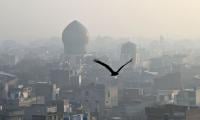In the rapidly shifting geopolitical dynamics, Wang Yi, the Chinese Foreign Minister paid a two-day visit from August 6 to August 8, 2022 in Bangladesh. Apparently, the visit indicates as if China is extending its reach for regional influence in Bangladesh. Bangladesh soon appears to become one of the Asian tigers with its recent economic boom. Therefore, it needs assistance from the regional powers particularly China. China has already advanced its relationship with Wang quoting Bangladesh as a “strategic development partner.” However, China’s increasing focus in Bangladesh, which borders India, appears to be concerning for India. In recent times, India’s relations with Bangladesh became distracted which make China to fill up the room. Consequently, it raises the central question “Is China’s increasing focus on Bangladesh alarming for India or not? It would, therefore be interesting to establish, which of the two Asian titans would exude clout in Bangladesh in the coming days.
Bangladesh and India have enjoyed proximity since India’s role in Bangladesh liberation war and the country’s independence. The ties between India and Bangladesh are rooted in history, culture, language, and shared ideologies such as secularism, democracy, and other socioeconomic similarities. Their relations are founded on a win-win cooperation that extends beyond a strategic alliance. Since Hasina’s government in 2009, relations with India have considerably improved. Cooperation in bilateral trade, investment, energy, high-technology, bilateral institutional systems, and border security has enhanced their partnership over the years.
However, more recently, the Bangladesh-India relationship looks to be under strain due to India’s repressive, discriminatory and conservative practices. India amended its citizenship law to prevent Muslim migrants from Bangladesh, Pakistan, and Afghanistan from obtaining Indian citizenship. Bangladesh was legitimately concerned that the new law would promote religious discrimination and illegal migration across the border. CAA (Citizenship Amendment Act) combined with NRC (National Register of Citizens) has already badly affected Indian Muslims who, naturally do not have the centuries’ old documentary evidence to prove their “Indian Origin” as otherwise, the NRC would label them as illegal migrants. It eventually can cause a Muslim flight from India to Bangladesh, which is already suffering from Rohingya refugee crisis.
Furthermore, Bangladesh is a lower riparian country that is concerned about sharing Teesta waters. India’s continuous dam construction along the Teesta in Sikkim has resulted in low seasonal outflow into Bangladesh. Bangladesh desires a larger share, which is lower than India’s because the river’s waterflow is vital to the livelihoods of millions in Bangladesh. However, India is unable to resolve the Teesta River matter due to the Western Bengal’s opposition.
Moreover, during Covid times Bangladesh was mostly reliant on vaccines manufactured in India. Despite a bilateral Commercial Agreement signed in 2020, India failed to deliver COVID-19 vaccines to Bangladesh. It sparked widespread public outrage among Bengali people. India’s vaccine hegemony in Bangladesh provided China with an opportunity to escalate its “vaccine diplomacy” with Bangladesh. Thus, with India’s unresolved bilateral squabbles, vis-à-vis its eastern neighbor, China might have gained a strategic edge which it is now seeking to augment.
Historically, China and Bangladesh had somehow antagonistic relationship due to China’s support towards Pakistan during Bangladesh’s liberation war. China also vetoed Bangladesh’s membership in the United Nations. Seeking to bury the past, China has advanced its diplomatic relations with its BRI initiative in Bangladesh. Through China’s trade diplomacy, it is financing and investing in the economic sectors. Moreover, during Wang’s recent visit, China has waived tariffs on 99% of Bangladeshi products. Bangladesh and China have also signed four Memorandums of Understanding (MOU) which cover the transfer of the 8th China-Bangladesh Friendship Bridge, disaster management, cultural exchanges, and marine science cooperation areas.
In addition to that, Sino-Bangladesh ties are not restricted only to defense and economy but territorial matters. China has shown concern about the Rohingya refugee issue and on the other hand, Bangladesh has supported “One China Policy” over Taiwan’s question. Going a step ahead, China has also taken a pro-Bangladesh stance for the very first time in the transboundary river politics between Bangladesh and India. Due to India’s defiance over the Teesta River China has sought to provide assistance to Bangladesh in developing a USD 1 billion construction scheme on the Teesta. The project aims to construct canal network. It also includes Teesta Irrigation and River Management for northern parts of Bangladesh that has recently been facing severe water crises. These developments reflect China’s enhanced focus towards Bangladesh to further its regional influence.
Needless to say, Bangladesh’s strategic location in proximity to the Bay of Bengal and Indian Ocean is significant for the regional influence. China’s courtship of Bangladesh is part of a larger struggle over regional and maritime security. China is eager to construct a new deep sea port in Bangladesh to consolidate its position in the Indian Ocean. Bangladesh also serves as an important link in China’s Maritime Silk Road initiative. Quite understandably, from India’s perspective, China’s interest in Bangladesh given its strategic location is a part of its string of pearl strategy. It is also argued that Bangladesh under BRI falls under the same game. Since the commencement of the BRI, China has strengthened its relationship with Bangladesh by investing billions of dollars in infrastructure projects. It is therefore, asserted that Bangladesh is seen by China as a gateway for the Maritime Silk Route, which offers Chinese access to the Indian Ocean and beyond.
Nevertheless, Chinese growing influence in Bangladesh has given rise to certain suspicions within Bangladeshi intelligentsia and bureaucratic circles. They argue that China has been defending Myanmar’s government in the UN over the Rohingya issue, despite expressing support for Bangladesh. Moreover, economic segments in Bangladesh are concerned about the future economic consequences of the BRI initiative referring to the debt trap as its necessary evil.
To counter China’s growing assertiveness, India has also been courting Bangladesh as part of its “Act East” policy. The goal is to reconnect NER (North-Eastern Region) with Bangladesh by road, rail, water, and air connections to secure its maritime security interests. Some regional maritime experts also view India’s naval engagement in the East as a “tit-for-tat” response to Chinese incursions into the Indian Ocean. Moreover, India is making diplomatic efforts to persuade Bangladesh to join the “Quad” to strengthen its Indo-Pacific strategy.
Nonetheless, the Indian efforts regarding Bangladesh courtship of China illustrates India’s concern. Regional analysts are of the view that notwithstanding the occasional tensions and their strategic and security ramifications, Indian neighborhood factor remains relevant in Bangladesh statecraft particularly in Hasina’s incumbent tenure. It is evident in Bangladeshi politics that India has always been the center while other regional powers used to be on the periphery. Historical bound relationship of India and Bangladesh plays a significant role that is defined by their socio-cultural affinity. Geography is another natural factor that further made their relationship incomparable. However, Bangladesh should employ its position tactfully and strategically to avoid being the kickball among two giants. Maintaining diplomatic ties with both India and China is critical for infrastructurally weak country like Bangladesh.
This image shows a Rawalpindi Police official interacting with his juniors on November 30, 2023. —...
View of a China-Pakistan B2B Conference focusing on animal feed, fruit and vegetable processing industries hosted by...
Participants pose for a group photo at the First cohort of training in Islamabad on November 27, 2024. —...
CDA workers are cleaning an area following the PTI protest in Islamabad on November 27, 2024. — APPIslamabad :...
Muslim pilgrims circle the Kaaba as they pray at the Grand Mosque, during the annual haj pilgrimage in the holy city...
This representational image shows buses and other public transport vehicles filled with passengers. —...







